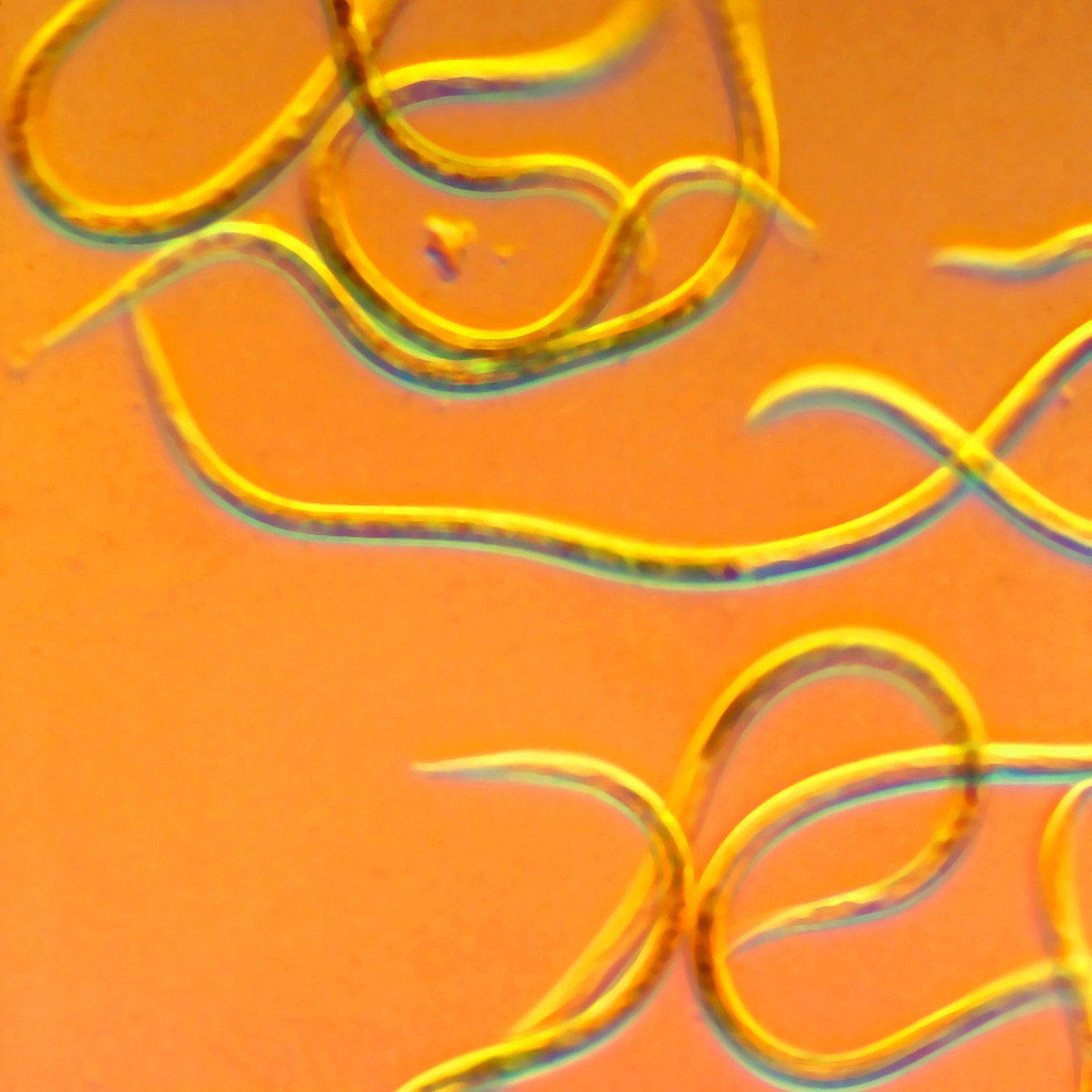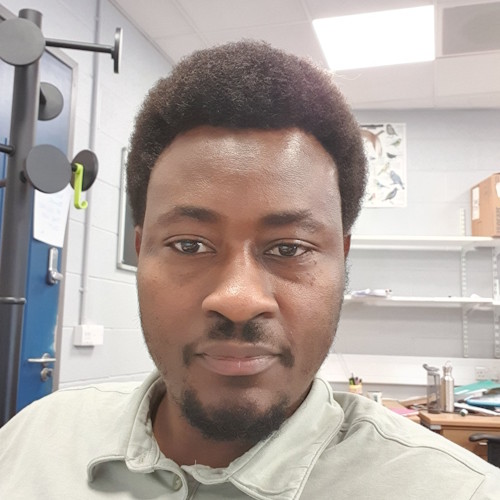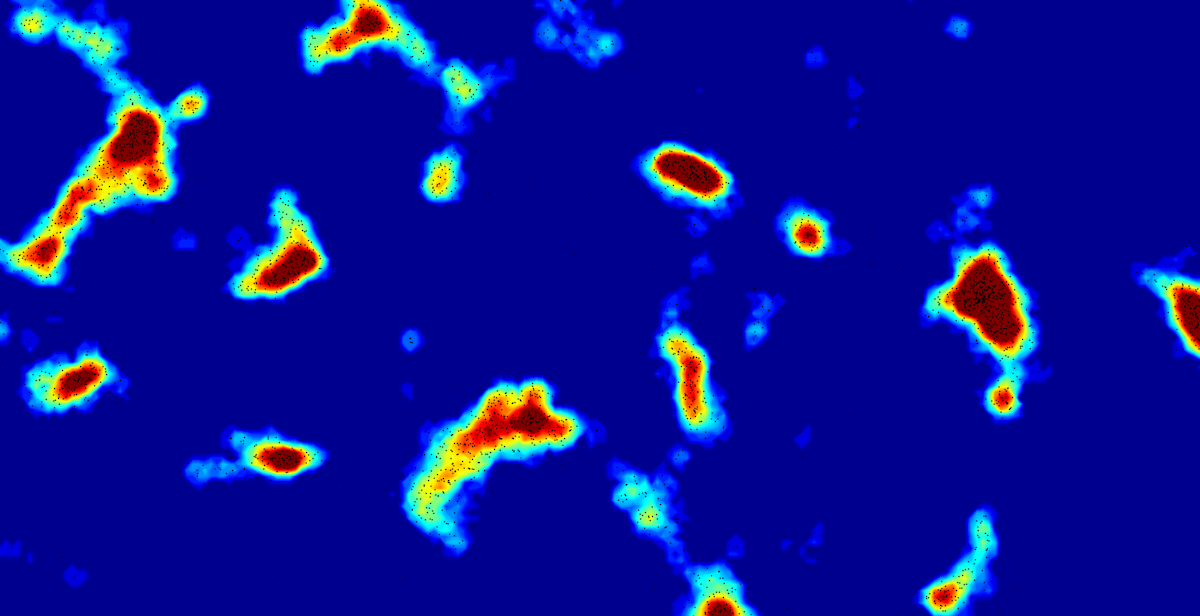Exploiting nematode genomes to illuminate parasite biology

Also in “ Scientific meeting”
Theo Murphy meeting organised by Professor Mark Viney, Dr Shannon Hedtke and Professor Erik Andersen.
Parasitic nematodes are very common and important parasites – infecting over a billion people worldwide and causing major impacts on commercial agriculture. The aims of this meeting are to discuss how to use genomics to understand the fascinating, fundamental biology of these parasites, discover their adaptions to be parasites, and help control these infections and the harm that they cause.
Programme
The programme, including the speaker biographies and abstracts, will be available soon. Please note the programme may be subject to change.
Poster session
There will be a poster session on Monday 23 March. Registered attendees will be invited to submit a proposed poster title and abstract (up to 200 words). Acceptances may be made on a rolling basis so we recommend submitting as soon as possible in case the session becomes full. Submissions made within one month of the meeting may not be included in the programme booklet.
Attending this event
- Free to attend and in-person only
- When requesting an invitation, please briefly state your expertise and reasons for attending
- Requests are reviewed by the meeting organisers on a rolling basis. You will receive a link to register if your request has been successful
- Catering options will be available to purchase upon registering. Participants are responsible for booking their own accommodation
- Please do not book accommodation until you have been invited to attend the meeting by the meeting organisers
Enquiries: contact the Scientific Programmes team.
Organisers
Schedule
Chair

Professor Erik Andersen
John Hopkins University, USA

Professor Erik Andersen
John Hopkins University, USA
Erik Andersen is a geneticist with extensive experience in molecular, quantitative, and population genetics and genomics. He received his BS in Biological Sciences from Stanford University. Then, at the Massachusetts Institute of Technology, he studied the developmental genetics of chromatic remodelling in Caenorhabditis elegans advised by Dr H Robert Horvitz. His research interests shifted to quantitative genetics and genomics for his NIH NRSA Post-doctoral Fellowship with Dr Leonid Kruglyak at Princeton University. From 2013 to 2023, his work at Northwestern University has focused on central question in evolutionary genetics: what are the genes and molecular mechanisms that underlie phenotypic differences? These mechanisms from nematodes, as a model animal, enable large-scale genetics and genomics studies not possible in other animal systems. His laboratory created huge species-wide collections of wild strains for multiple nematode species to allow them to answer questions of evolutionary relevance ranging from drug resistance to niche preferences in nature. Over the years, he has contributed discoveries across genetic, genomic, physiological, systems, and ecological perspectives. Erik is a Pew Biomedical Scholar, a National Science Foundation CAREER recipient, Fulbright Global Scholar recipient, an American Cancer Research Scholar, a Human Frontiers Science Program Grantee, and a March of Dimes Basil O'Connor Awardee. In 2023, his laboratory moved from Northwestern University to Johns Hopkins University to further pursue genetics and genomics in Caenorhabditis and other nematode species.
| 09:00-09:25 |
Title to be confirmed
Professor James CottonUniversity of Glasgow, UK Professor James CottonUniversity of Glasgow, UK |
|---|---|
| 09:25-09:50 |
From genotype to intervention: genomic tools for helminth surveillance and control
Genomic epidemiology is emerging as a valuable tool for informing helminth control strategies. Recent advances in population genomics applied to Fasciola hepatica, Onchocerca volvulus, Wuchereria bancrofti, and Brugia malayi have demonstrated utility in characterising drug resistance loci, estimating reproductive worm burden, assessing treatment response, and elucidating transmission dynamics. In F hepatica, comparative analyses have identified region specific triclabendazole resistance loci, underscoring the need for geographically tailored surveillance. In filarial parasites, genome-wide data from individual microfilariae have enabled the estimation of reproductive worm burden and the differentiation between recrudescence and reinfection, two critical parameters for evaluating treatment efficacy and mass drug administration (MDA) programs that were previously difficult to obtain. Genetic relatedness and population structure analyses have provided further insight into transmission dynamics, revealing parasite movement within and between host populations, across geographic regions, and among host species. These approaches offer a framework for tracking transmission pathways and the spread of epidemiologically important traits such as drug resistance. However, broader implementation and effective integration of genomic tools into control programs will require continued development and coordinated efforts. Although technical advances such as exome capture and whole-genome amplification have significantly improved the recovery of parasite DNA from clinical and field samples, further refinement of methods to obtain parasite genetic data from diverse sample types, such as stool biobanks, blood smears, and vector samples for xenomonitoring, should remain a high priority. In parallel, it is essential to establish curated population genomic databases and standardised, modular analytical pipelines adaptable to varied epidemiological scenarios to support the design of gene panels with informative markers suitable for field-deployable genotyping platforms. Genomic methods when used as a complement to parasitological techniques have the capacity to significantly enhance the precision and effectiveness of helminth control efforts. Professor Makedonka MitrevaWashington University School of Medicine, USA Professor Makedonka MitrevaWashington University School of Medicine, USA |
| 09:50-10:15 |
Title to be confirmed
Professor John GilleardUniversity of Calgary, Canada Professor John GilleardUniversity of Calgary, Canada |
| 10:15-10:55 |
Break
|
Chair
Dr Shannon Hedtke
La Trobe University, Australia
Dr Shannon Hedtke
La Trobe University, Australia
| 10:55-11:10 |
Speaker to be confirmed
|
|---|---|
| 11:10-11:25 |
Speaker to be confirmed
|
| 11:25-11:40 |
Speaker to be confirmed
|
| 11:40-12:25 |
Panel discussion
|
Chair

Professor Sebastian Eves-van den Aker
University of Cambridge, UK

Professor Sebastian Eves-van den Aker
University of Cambridge, UK
| 13:40-14:05 |
Title to be confirmed
Dr Lewis StevensWellcome Sanger Institute, UK Dr Lewis StevensWellcome Sanger Institute, UK |
|---|---|
| 14:05-14:30 |
How and why plant-parasitic nematodes edit HYP genes in their somatic cells
The HYP genes of plant-parasitic Globodera nematodes encode secreted effector proteins with staggering sequence diversity. Previous work on HYPs strongly suggests that this diversity is allelic and that it is produced by developmentally-programmed rearrangements: that is, the nematodes edit HYP genes in their somatic cells by shuffling a set of short DNA sequence motifs within a hypervariable domain. Although the germline diversity of HYP alleles is small, such editing is thought to create hundred or thousands of distinct somatic alleles across a population. Both the mechanism of HYP editing and its pathogenic function are unknown. In this talk, we discuss a DNA repair hypothesis for the editing mechanism that the nematode uses to rearrange HYP genes, and we evaluate this in light of the latest findings. We also present an immune evasion hypothesis for the pathogenic function of HYP editing, which we discuss in comparison with a range of analogous editing systems in distantly related organisms. Dr Vincent HanlonUniversity of Cambridge, UK Dr Vincent HanlonUniversity of Cambridge, UK Vincent's work bridges the genetics of mutation and technology development for DNA sequencing. Previously, he worked on the accumulation of heritable somatic mutations in large old trees, before developing single-cell DNA sequencing protocols and associated bio-informatics for haplotyping and inversion-calling applications. Now his research focuses on the somatic diversification of HYP genes in Globodera plant-parasitic nematodes. |
| 14:30-14:55 |
The structure and diversity of parasitism island in wild Strongyloides ratti populations
Strongyloides ratti is a common parasitic nematode of rats. It has c. 900 genes associated with parasitism. Among these are genes encoding astacin-like metalloproteases, acetylcholinesterases, CAP domain-containing proteins, and transthyretin-like proteins. Many of these genes are arranged adjacently in gene clusters referred to as "parasitism islands". In UK S. ratti populations these parasitism islands have higher levels of polymorphisms than other genomic regions. Most of these polymorphisms are non-synonymous, suggesting functional divergence among parasitism island gene products. To explore the functional impact of such variation in the island genes, we analysed genomes from twenty-five wild UK S. ratti genotypes using long-read sequencing and characterised their parasitism islands. We find that parasitism island structure is diverse among genotypes in terms of the number of islands, their genomic position, and gene composition. Focusing on astacin-like metalloproteases, structural protein modelling and alignment with experimentally-determine structures shows that over 85% of parasitism island encoded astacins lack the zinc-binding motif that is essential for protease activity. This loss contrasts with astacins encoded outside of parasitism islands, where most retain the motif and, presumably, protease activity. Because genes encoding these non-canonical, motif-deficient astacins are highly expressed, we suspect that they may have alternative, non-protease functions such as substrate binding, and phylogenetic analyses shows that their evolution is Strongyloides-specific. 
Dr Mohammed AhmedUniversity of Liverpool, UK 
Dr Mohammed AhmedUniversity of Liverpool, UK Mohammed Ahmed is a nematologist and evolutionary biologist whose research spans the systematics, genomics, and evolutionary history of nematodes and other parasitic organisms. Trained in nematode taxonomy and phylogeny, he employs integrative morphological and molecular approaches to uncover hidden diversity and evolutionary relationships across the nematode phylum, particularly those from poorly known groups. His earlier work addressed the taxonomy and phylogenomics of terrestrial and marine nematodes, demonstrating expertise in bioinformatics and high-throughput sequencing. Currently, Mohammed is a postdoc at the University of Liverpool focussing on the parasitic nematode Strongyloides ratti, exploring the genomic basis of parasitism. His work highlights large-scale gene-expansion events linked to parasitic lifestyle evolution, strain-level genomic diversity within S ratti populations and evolution of parasitism gene families. This research aims to offer new insights into how S ratti evolved novel genetic toolkits to invade, exploit and persist within its hosts. |
| 14:55-15:35 |
Break
|
Chair
Dr Janna Fierst
Florida International University, USA
Dr Janna Fierst
Florida International University, USA
| 15:35-16:00 |
A pangenomics framework to explore hyper-divergent regions in Caenorhabditis elegans
Caenorhabditis elegans primarily reproduces by self-fertilization, which leads to reduced levels of genetic diversity and potentially limits the adaptive potential of the species. In previous studies, we amassed 1,952 wild C. elegans strains collected from around the globe, sequenced the genomes using short-read technologies, and found that these strains contain punctuated genomic regions of extreme genetic diversity (hyper-divergent regions, HDRs) when compared to the reference N2 strain. These HDRs are enriched for genes associated with environmental responses such as xenobiotic stress and olfaction and might play a role in adaptation. However, the gene content of these regions remains incomplete because the extreme divergence in HDRs between the wild and reference genomes complicates short-read DNA alignments. To address this limitation, we generated de novo assemblies of 144 wild strains using PacBio HiFi long-read sequencing. We predicted protein-coding genes in these wild strain genomes, identified single-nucleotide and structural variants, and created a gene-based pangenome. Our gene-based pangenome has elucidated gene copy-number variation among wild strains, and we have identified hundreds of novel genes. We quantified levels of enrichment for structural variants, copy-number variants of specific genes, and novel gene birth in HDRs. This gene-based pangenome will be used to create new genotype matrices and perform genome-wide association mappings to connect gene content differences to phenotypic variation across the species, further elucidating the molecular mechanisms of adaptation and the role HDRs have in the long-term survival of this androdioecious species. 
Mr Lance O'ConnorJohn Hopkins University, USA 
Mr Lance O'ConnorJohn Hopkins University, USA Lance is a third year Cell, Molecular, Developmental Biology, and Biophysics PhD Candidate at John Hopkins University. He earned his BS in Cellular and Organismal Physiology from the University of Minnesota in 2023 and enrolled at John Hopkins University to study computational genomics in Erik Andersen's laboratory. Lance received an honourable mention for his NSF GFRP application in 2025 and a Victor Corces Excellence in Teaching Award from John Hopkins University. He is interested in how intraspecies genetic variation shapes adaptive potential of species and how genotypic variation influences phenotypic variation. |
|---|---|
| 16:00-16:25 |
Dr Janna FierstFlorida International University, USA Dr Janna FierstFlorida International University, USA |
| 16:25-17:10 |
Panel discussion
|
Chair

Professor Mark Viney
University of Liverpool, UK

Professor Mark Viney
University of Liverpool, UK
Mark Viney is Professor of Zoology at University of Liverpool. He started studying parasitology as a student at Imperial College London before doing a PhD at the Liverpool School of Tropical Medicine, studying Strongyloides infection in people and other animals in the island of New Guinea. Since then he has continued to work on the biology and genetics of Strongyloides, and parasite eco-immunology at the Universities of Edinburgh, Bristol and Liverpool, in the UK, with a C elegans interlude at Caltech, USA.
| 09:00-09:25 |
Title to be confirmed
Dr Shannon HedtkeLa Trobe University, Australia Dr Shannon HedtkeLa Trobe University, Australia |
|---|---|
| 09:25-09:50 |
Title to be confirmed

Dr Hugues Clotaire Nana DjeungaTranslational Research and Development Foundation, Cameroon 
Dr Hugues Clotaire Nana DjeungaTranslational Research and Development Foundation, Cameroon |
| 09:50-10:15 |
Genomic insights into zoonotic transmission in Brugia malayi
Genomic epidemiology provides a valuable framework for investigating transmission dynamics and host specificity nematodes. In Indonesia, Brugia malayi is the most prevalent filarial parasite causing lymphatic filariasis (LF) in humans. In Belitung District, which was declared LF-free in 2017 after five rounds of mass drug administration and three transmission assessment surveys, a resurgence in microfilariae prevalent was reported in 2021. To investigate this persistence, we conducted whole-genome sequencing of microfilariae collected from humans, cars, dogs and monkeys. Population genomic analyses indicated that B malayi population in Belitung is genetically distinct from those in Thailand and Malaysia. Nuclear genome data identified two sympatric subpopulations: a zoophilic lineage infecting both animals and humans, consistent with the presence of animal reservoirs, and an anthropophilic lineage restricted to humans. Co-infection of both lineages within human hosts suggests overlapping transmission cycles. Mitochondrial genome analysis revealed a divergent haplogroup closely related to B timori, resulting in mito-nuclear discordance that may reflect historical introgression. These findings highlight the importance of genomic approaches in characterising population structure, host adaptation, and cross-species transmission in filarial parasites. Integrating genomic data into surveillance programs could strengthen efforts to identify zoonotic reservoirs and support the development of regionally tailored strategies for lymphatic filariasis control. 
Dr Young-Jun ChoiWashington University School of Medicine, USA 
Dr Young-Jun ChoiWashington University School of Medicine, USA Young-Jun Choi studied filarial worm-mosquito interactions as a graduate student under Bruce Christensen at the University of Wisconsin-Madison and completed postdoctoral training with Makedonka Mitreva at Washington University School of Medicine in St Louis, where he is currently a Senior Scientist. His research focuses on filarial worms that cause lymphatic filariasis and onchocerciasis, as well as on the liver fluke Fasciola hepatica. Using comparative and population genomic approaches, he investigates parasite transmission dynamics and the genetic mechanisms underlying drug resistance. His works aims to advance understanding of the evolutionary and genetic processes that shape parasite epidemiology and to develop molecular tools that enhance surveillance, inform control strategies, and help reduce the global burden of these infections. |
| 10:15-10:55 |
Break
|
Chair
Dr Vicky Hunt
University of Bath, UK
Dr Vicky Hunt
University of Bath, UK
| 10:55-11:10 |
Speaker to be confirmed
|
|---|---|
| 11:10-11:25 |
Speaker to be confirmed
|
| 11:25-11:40 |
Speaker to be confirmed
|
| 11:40-12:25 |
Panel discussion
|
Chair
Dr Roz Laing
University of Glasgow, UK
Dr Roz Laing
University of Glasgow, UK
| 13:40-14:05 |
Diversity in genetic diversity across nematode species
The genetic diversity harboured within any given species contributes to its adaptive potential. Distinct species, however, differ in their magnitudes of genetic diversity due to the influence of a broad range of ecological, organismal, and genomic factors. I will describe recent efforts to characterise the extent and evolutionary implications of heterogeneous genetic diversity across the genomes of various species of Caenorhabditis nematodes. The factors that influence genetic diversity along genomes and among species for these free-living organisms also hold instructive lessons for understanding the diversity and evolution of parasitic nematodes. Professor Asher CutterUniversity of Toronto, Canada Professor Asher CutterUniversity of Toronto, Canada Asher Cutter is a Professor of Ecology and Evolutionary Biology at the University of Toronto. He completed a BSc at Tufts University, a Fulbright Scholar at James Cook University, and PhD at the University of Arizona before conducting an NSF International Postdoctoral Fellowship at the University of Edinburgh. |
|---|---|
| 14:05-14:30 |
Title to be confirmed
Dr Stephen DoyleWellcome Sanger Institute, UK Dr Stephen DoyleWellcome Sanger Institute, UK |
| 14:30-14:55 |
Title to be confirmed

Dr Mark SterkenWageningen University & Research, The Netherlands 
Dr Mark SterkenWageningen University & Research, The Netherlands |
| 14:55-15:35 |
Break
|
Chair
Professor Asher Cutter
University of Toronto, Canada
Professor Asher Cutter
University of Toronto, Canada
Asher Cutter is a Professor of Ecology and Evolutionary Biology at the University of Toronto. He completed a BSc at Tufts University, a Fulbright Scholar at James Cook University, and PhD at the University of Arizona before conducting an NSF International Postdoctoral Fellowship at the University of Edinburgh.
| 15:35-16:00 |
Title to be confirmed
Dr Roz LaingUniversity of Glasgow, UK Dr Roz LaingUniversity of Glasgow, UK |
|---|---|
| 16:00-16:25 |
Title to be confirmed
Dr Vicky HuntUniversity of Bath, UK Dr Vicky HuntUniversity of Bath, UK |
| 16:25-17:00 |
Panel discussion
|




